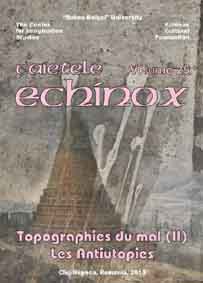The Painted Bird: Jerzy Kosinski and the Mythopoetics of Dystopia
The Painted Bird: Jerzy Kosinski and the Mythopoetics of Dystopia
Author(s): Sibusiso Hyacinth MadondoSubject(s): Literary Texts
Published by: Universitatea Babeş-Bolyai
Keywords: Jerzy Kosinski; Holocaust; Painted Bird; Jewish Stray; Nazi; Concentration Camp; Wandering Jew; Dystopian Fiction; Aristophanes.
Summary/Abstract: Jerzy Kosinski’s novel is told from the point of view of an unnamed six year old wandering street urchin who inhabits an unnamed, hellish wonderland bristling with cheating, violence, malevolence, perversion and lies during the Second World War. The little boy’s parents send him to live in the countryside in the hope that he will escape the ravages of war. Unfortunately, his life in the countryside becomes a nightmare as he is destined to undergo the harrowing experience on a daily basis of being bullied by the blue-eyed, blond village louts who speak the rural dialect. He is dark-haired and dark-eyed and speaks the educated dialect, consequently he is considered a “Gypsy or Jewish stray” during a time when these traits are virtually tantamount to a death sentence. For the rest of the Second World War he passes from hand to hand like Lazarillo de Tormes, being exposed to all kinds of vices and evils. Nonetheless, he learns to become a survivor and each time he experiences a run of misfortune, he finds ways to wriggle out of the predicament: he escapes from the captivity of a Nazi concentration camp; he survives after being thrown in a manure pit at the cost of losing the power of speech till the end of the novel when he suddenly feels the urge and rediscovers the ability to speak again.
Journal: Caietele Echinox
- Issue Year: 2013
- Issue No: 25
- Page Range: 139-146
- Page Count: 8
- Language: English
- Content File-PDF

